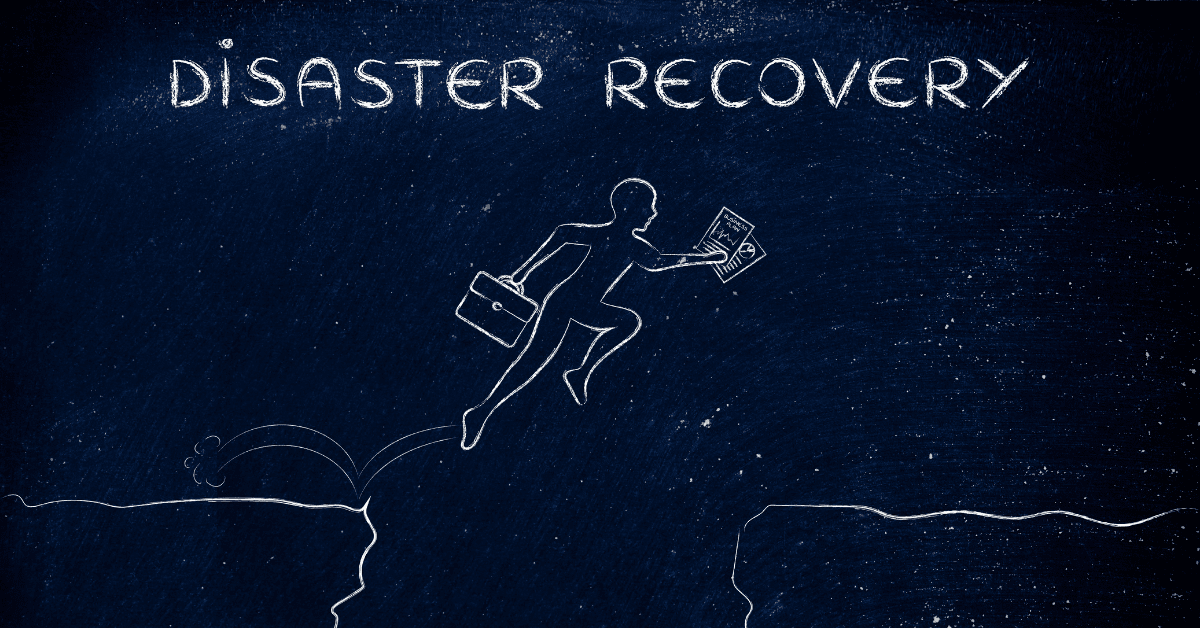
It is no longer adequate to just protect your data – you need to forfend your business with a disaster recovery solution.Some organizations question how much to invest in a disaster recovery plan. They are reluctant to allocate significant budget and staff to systems they will need in the face of a disaster that may, or may not, occur. The Disaster Recovery Preparedness Council found that nearly three quarters of organizations worldwide aren’t properly protecting their data and systems.
Downtime after a natural disaster, major equipment failure, or even human error negatively impacts your bottom line. Statista found that downtime could cost some companies more than $5 million per hour. Why is downtime so costly? It’s unpredictable. A business interruption may last anywhere from a few hours to a few weeks — or even longer.
If your company doesn’t have a DR plan, downtime can be disastrous, exposing your company to potential losses and potentially causing it to go out of business. Consider just a few of these costs of poor business continuity planning:
Lost productivity: According to Gartner, the average cost of IT infrastructure downtime can be $5,600 per minute, or more than $300,000 per hour. In reality, many variables will affect the actual cost, but even at 25 percent of that average, it’s a costly proposition. In other types of companies, workers sit idle while still collecting a salary. The longer employees are unable to contribute to the organization the harder it is to pay their salaries, the more your company’s profits shrink. Your business may have recovery time objectives (RTOs) and recovery point objectives (RPOs) that would minimize lost production time. However, without a DR plan, you may not be able to meet these goals. Failing to meet RPOs means losing access to real-time information needed to monitor and manage assets. Equipment could miss out on preventive maintenance, leading to further production stoppages once initial data recovery has been accomplished.
Reputation damage: Not all damage is financial. If your client shuts down for a long time, their reputation suffers. If it’s due to a data breach or ransomware, businesses will worry about how secure their data is with your client. Today, customers and clients expect your company to be available around the clock. Downtime makes your business inaccessible when customers need you. Customers who want to access your products and services don’t like to be kept waiting. In their impatience, they may turn to your competitors when they are unable to reach your representatives or place orders through your website. The customers of financial services firms may panic when they can’t access their accounts. Being unavailable makes your company seem unreliable and untrustworthy, eroding your customer loyalty. The cost of acquiring new customers adds to the long list of expenses created by a disaster.
Losing Revenue : When your company experiences downtime, customers can’t buy your products and services. For every hour your systems are down, you lose the revenue and credibility that you would gain from these purchases. For financial companies, this downtime means missing out on deposits, investments, or trading fees. Healthcare organizations can’t provide medical care, so they cannot bill for these services. Lost revenue can snowball into lost consumer confidence, increased employee dissatisfaction, and bad PR. Of the small businesses operating with no DR plan, Nationwide found, almost half estimated it would take them 3 months to recover after a natural disaster. Going for months without revenue sources could irreparably harm or even bankrupt a business.
Recovery costs: This may seem to be a part of all of the above, but in some cases where a company has decided to keep much or all of its data in-house, on premises, they will be incurring the full recovery costs.
What to prioritize?
Not every part of an organization will need a disaster recovery plan. DR involves licenses, bandwidth, storage and system admin time. The less an organization has to protect with a DR strategy, the more it will save. The equation of what to protect is difficult to balance, but essentially boils down to the following categories:
Must-have infrastructure. This is infrastructure the organization cannot function without.
"Nice-to-have" infrastructure. This is infrastructure that is recoverable only if the DR budget allows it.
Everything else. This category can be left to recover last without potential to damage the organization.
An enterprise network diagram maps all relationships and dependencies within an IT infrastructure, serving as a blue print of system requirements that can guide organizations through these tasks.
Which DR option is the most cost-effective?
Failover to cloud is increasingly popular because it doesn't require organizations to own physical DR assets that often sit there idle. While organizations do incur a cost when they fail over to the cloud, these costs are small in comparison to owning and maintaining an entire physical infrastructure. Cloud is the go-to DR option for most smaller companies, not only because of cost and simplicity, but also because of the support they can get from the cloud provider.
For bigger environments, a warm physical site is a consideration. However, warm sites are incredibly expensive, with costs that include power, light, HVAC, cooling, server hardware, network infrastructure, staffing and security. However, all those resources belong to the organization to use exclusively.
